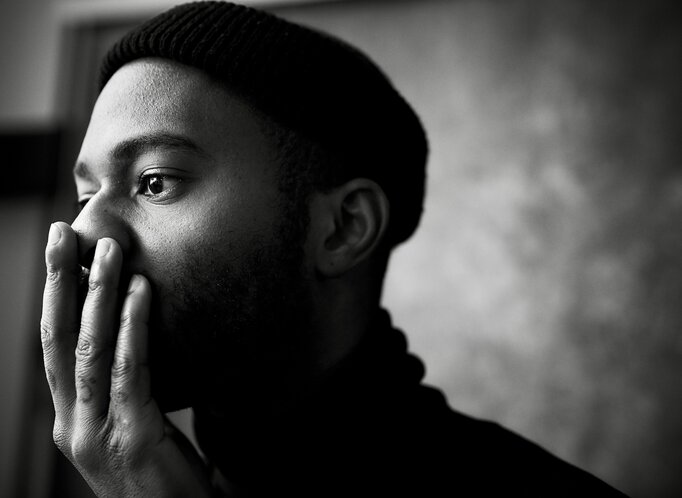 That’s right, I said it.
That’s right, I said it.
Positive thinking is a mistake.
If you’ve ever been told to clear your mind, breathe slowly, and visualize your triumph over a challenging situation, then I’m sure you agree with me.
Popular strategies like those sound great in our heads, but in reality, they aren’t very useful.
Our thought life is too important to build its foundation on that shaky ground. So today, I’ll show you a more reliable approach.
Why Positive Thinking Is a Mistake
It’s not my intent to be a contrarian for its own sake, so first, I’ll admit that positive thinking, under some definitions, is quite valuable. Making the effort to control your thoughts in the face of problems is a clear sign of mental strength, and I’m all for that.
So why do I say positive thinking is a mistake?
For one, because we define it a million ways.
The positive thinking umbrella includes everything from simple expressions of gratitude to full on Eastern mysticism. But from what I see, the most popular view of positive thinking is equating it to optimism. And this is a well-intentioned mistake.
Contrary to popular belief, positive thinking and optimistic thinking are not 100 percent the same.
Optimism involves being hopeful and assured about the future, but those attitudes are often results of a healthy mindset, not elements of one.
When we equate positive thinking to optimism, we seek hope without a realistic basis for it—a.k.a delusion. Instead of thinking rightly about our circumstances and understanding why we should be confident about them, we skip steps by chasing good feelings immediately.
Now don’t get me wrong, it’s understandable why we do this. Reality is sometimes difficult, scary, and even cruel. But we can’t let that truth stop us from thinking a better way.
How We Should Really Think Instead
 If positive thinking is a mistake, then how should we really think instead?
If positive thinking is a mistake, then how should we really think instead?
Let me introduce what I call constructive thinking.
Constructive thinking involves truthfully reframing circumstances and developing a useful attitude towards them. Or in other words, constructive thinking is making your thoughts work for you.
Now notice the wording I’ve used so far: truthful, constructive, useful. I’ve said nothing about happiness, optimism, or other feelings.
The goal of constructive thinking isn’t to chase good feelings; it’s to develop reality-based thoughts that help you face problems. Constructive thinkers don’t try to directly control how they feel. Rather, they know constructive thinking done right leads to emotional stability.
Now does that mean constructive thinkers are always happy?
No, and that’s okay.
It’s okay to not feel happy, but even in our toughest moments, we need to make our minds work for us instead of piling the misery on.
How to Become a Constructive Thinker
So how do we start thinking constructively?
We train ourselves to reframe circumstances in 4 areas:
- Time
- Impact
- Support
- Confidence
We start by gauging how time relates to our problems and go on to assess their impact. Then we review the support available to help and develop the confidence needed to form a useful response.
Let’s take a look at each element in detail.
#1) Time
The way things are now is not how they will always be.
That’s my mantra when I think in terms of time. I reflect on the temporary nature of my problems and understand that what’s important now might look like a speed bump later on.
Our priorities and goals change constantly, and some of the stuff that stresses us in the present may be irrelevant in the not-so-distant future.
When we’re bogged down by these problems that make us crave instant fixes, it’s also vital to remember that time is a great healer. Our bodies recover over time, our emotions weaken over time, and tensions ease over time. The urgency and pain we feel in the moment can often be softened by just realizing those facts.
But now with all that said, we shouldn’t restrict this time assessment to difficult moments either. It’s useful to do this during good situations too. Good times in life are just as temporary as hard ones—remembering that will stop you from indulging when things do go your way.
Time shows that neither bad nor good seasons are permanent. So constructive thinkers prepare during good times, and endure during hard ones.
#2) Impact
Similar to how we acknowledged the temporary nature of circumstances, we should now form a realistic view of their impact.
The good news here is that most times, our problems aren’t nearly as bad as they appear. Life is full of perfectly normal peaks and valleys—no matter how much we strive to make it predictably good—and we often overreact to the effects those ups and downs have.
Our goal at this point is to expand our perspective and see if our current problem is as impactful as we think.
Sometimes it is, which means we should prioritize the issue because our response is crucial. But oftentimes, we exaggerate our issues because we don’t know how to fix them. And this uncertainty affects us more than the actual problem should.

The key thing here is to brainstorm reasons why the situation may not be as bad as you think:
- Ask yourself if you know all the details regarding the issue
- Question whether you’re exaggerating the effects
- Look for reasons why the problem may be more controllable than it seems
That’s the constructive way to learn how deep the valley really is.
#3) Support
Next, we move away from the problem and start forming a response. But notice that we’re not thinking about ourselves yet. We want to use our support as a shield against problems first.
We all have different bodies of knowledge and experience. What’s difficult to you may be easy to someone you know—all you have to do is unlock their support.
How do you unlock it, you ask?
You communicate.
People can’t help you if they don’t know what you’re dealing with, but if you’re honest with them, you’ll be surprised how much of a difference they can make.
Don’t assume what others are capable of or how they might respond. Ask trusted people for their input and thank them for their effort instead.
Trust me, this is coming from a lone wolf who writes in solitude, works best alone, and never joined any study groups in school: Life is much easier when you get help from others.
Even if you don’t find value in what’s initially offered, you’ll still open doors that might be useful later on.
#4) Confidence
 After thinking rightly about our situation and our support, we can finally think of ourselves.
After thinking rightly about our situation and our support, we can finally think of ourselves.
Here we use the previous elements of constructive thinking to form a response. And in order to form a good one, we’re going to build our confidence.
Ask yourself, “What should make me confident in this situation?”. And if you can’t think of anything, ask, “How can I become confident here?”.
This will drive you down a path of self-reflection:
- What personal talents can you use to immediately soften the impact?
- Which of your past actions, experiences, or achievements relate to this situation?
- What skills are required for you to feel confident, and what must you do to obtain them?
Again, notice how everything here is based on reality. We’re looking for skills, past achievements, and experience to boost our confidence. We’re not deluding ourselves into thinking anything’s possible if we just believe.
Once we’ve encouraged ourselves like this, we’ll have a healthier view of challenges and our capability to face them.
We’ll see that temporary hurdles are smaller than we thought, while our newfound support and confidence will bring the hope we only chased before.
Put Your Thoughts to Good Use
 Time, impact, support, and confidence. Think rightly in those areas to make your mind work for you.
Time, impact, support, and confidence. Think rightly in those areas to make your mind work for you.
As a constructive thinker, you won’t need to chase comfort to deal with life’s problems anymore. Your experience responding to life creatively will bring comfort instead.
That is constructive thinking in a nutshell. And it all sounds very positive to me.
-Drew
Photo Credits (By Order of Appearance):
- Darius Bashar on Unsplash
- Markus Winkler on Unsplash
- Andrea Piacquadio on Pexels
- Moose Photos on Pexels
- Andrea Piacquadio on Pexels
Leave a Reply